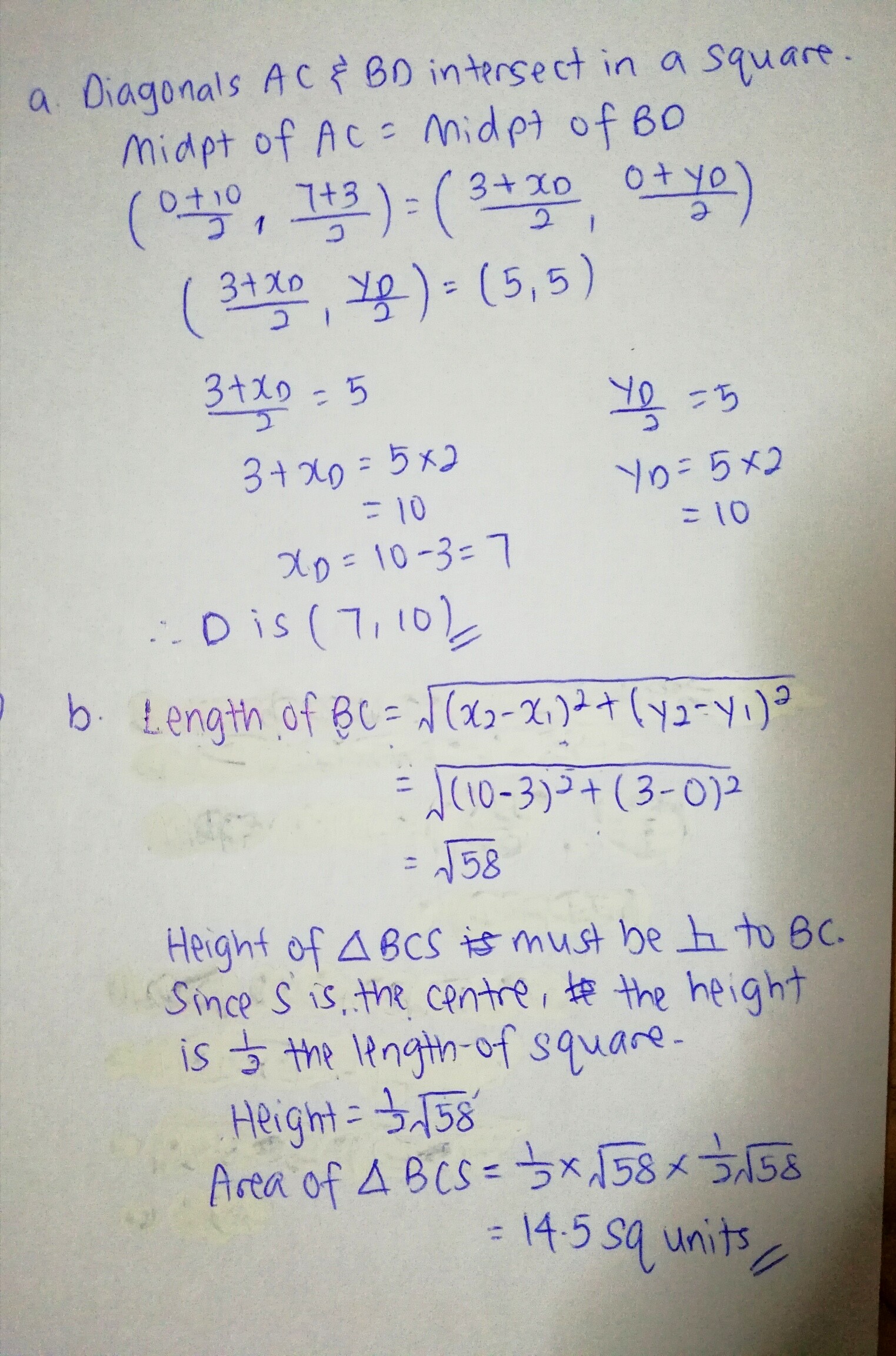Sin Yee's answer to idununderstandasinglething's Secondary 3 E Maths Singapore question.
Sin Yee has done a good job of answering both parts.
An alternative approach to part (a) is this.
B --> C is a movement of "7 units rightwards, 3 units up".
So does A --> D.
D muust be (0 + 7, 7 + 3) = (7, 10).
Also, there are several ways to do part (b), but the Gaussian area method (more commonly known as the "shoelace method") is an A Maths technique of finding areas and is not allowed in E Maths.
An alternative approach to part (a) is this.
B --> C is a movement of "7 units rightwards, 3 units up".
So does A --> D.
D muust be (0 + 7, 7 + 3) = (7, 10).
Also, there are several ways to do part (b), but the Gaussian area method (more commonly known as the "shoelace method") is an A Maths technique of finding areas and is not allowed in E Maths.



